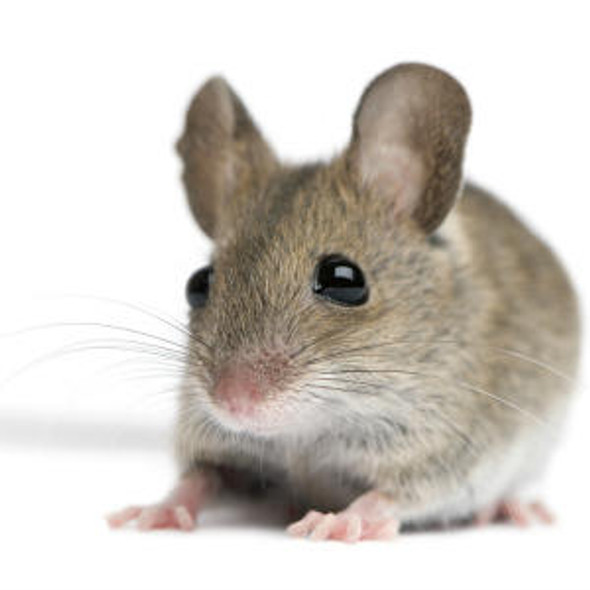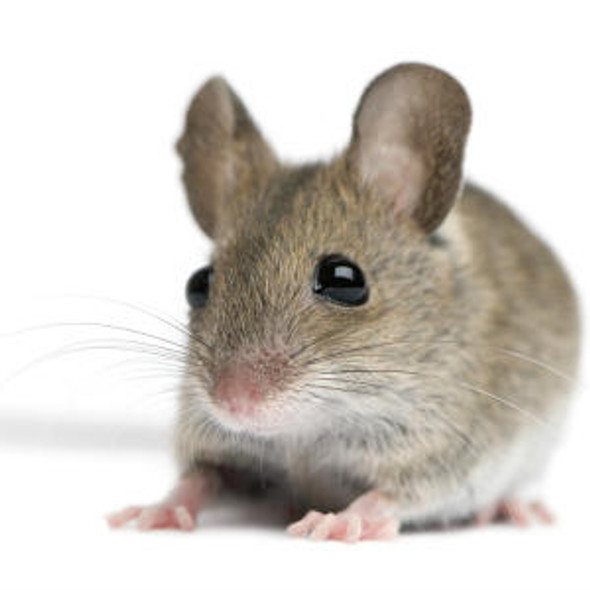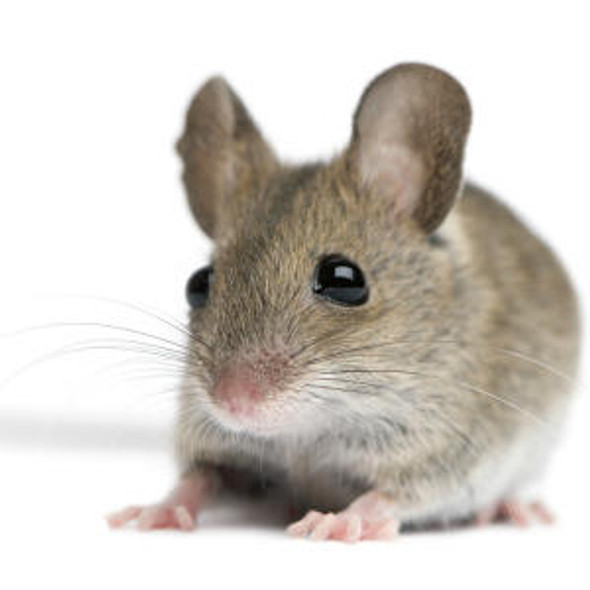Mouse Cell Signalling ELISA Kits 6
Mouse NAD-dependent deacetylase sirtuin-1 (Sirt1O) ELISA Kit
- SKU:
- MOEB2177
- Product Type:
- ELISA Kit
- Size:
- 96 Assays
- Uniprot:
- Q923E4
- Range:
- 31.2-2000 pg/mL
- ELISA Type:
- Sandwich
- Synonyms:
- Sirt1, NAD-dependent deacetylase sirtuin-1, SIRT1, SIR2-like protein 1, SIR2
- Reactivity:
- Mouse
Description
| Product Name: | Mouse NAD-dependent deacetylase sirtuin-1 (Sirt1O) ELISA Kit |
| Product Code: | MOEB2177 |
| Alias: | Mus musculus, SIRT1, NAD-dependent deacetylase sirtuin-1, SIR2-like protein 1, SIR2alpha, Sir2, mSIR2a, Sirt1, Sir2l1 |
| Uniprot: | Q923E4 |
| Reactivity: | Mouse |
| Range: | 31.2-2000 pg/mL |
| Detection Method: | Sandwich |
| Size: | 96 Assay |
| Storage: | Please see kit components below for exact storage details |
| Note: | For research use only |
| UniProt Protein Function: | SIRT1: an NAD-dependent protein deacetylase that links transcriptional regulation directly to intracellular energetics and participates in the coordination of several separate cellular functions such as cell cycle, response to DNA damage, metobolism, apoptosis and autophagy. Deacetylates a broad range of transcription factors and coregulators, thereby regulating target gene expression positively and negatively. Serves as a sensor of the cytosolic ratio of NAD(+)/NADH which is altered by glucose deprivation and metabolic changes associated with caloric restriction. Essential in skeletal muscle cell differentiation and in response to low nutrients mediates the inhibitory effect on skeletal myoblast differentiation which also involves 5'-AMP-activated protein kinase (AMPK) and nicotinamide phosphoribosyltransferase (NAMPT). Component of the eNoSC (energy-dependent nucleolar silencing) complex, a complex that mediates silencing of rDNA in response to intracellular energy status and acts by recruiting histone-modifying enzymes. Elevation of NAD(+)/NADP(+) ratio activates SIRT1. Recruited to LRH1 target gene promoters by NR0B2/SHP thereby stimulating histone H3 and H4 deacetylation leading to transcriptional repression. Implicated in regulation of adipogenesis and fat mobilization in white adipocytes by repression of PPARG. Involved in liver and muscle metabolism. Is involved in autophagy, presumably by deacetylating ATG5, ATG7 and ATG8. Deacetylates AKT1 which leads to enhanced binding of AKT1 and PDK1 to PIP3 and promotes their activation. Widely expressed. Inhibited by nicotinamide. Belongs to the sirtuin family. Class I subfamily. 2 isoforms of the human protein are produced by alternative splicing. |
| UniProt Protein Details: | Protein type:Nuclear receptor co-regulator; Apoptosis; Deacetylase; EC 3.5.1.- Cellular Component: axon; chromatin; chromatin silencing complex; cytoplasm; cytosol; ESC/E(Z) complex; growth cone; mitochondrion; nuclear chromatin; nuclear envelope; nuclear heterochromatin; nuclear inner membrane; nucleoplasm; nucleus; PML body Molecular Function:bHLH transcription factor binding; deacetylase activity; enzyme binding; histone binding; histone deacetylase activity; HLH domain binding; identical protein binding; mitogen-activated protein kinase binding; NAD-dependent histone deacetylase activity; NAD-dependent histone deacetylase activity (H3-K9 specific); nuclear hormone receptor binding; p53 binding; protein binding; protein C-terminus binding; protein deacetylase activity; protein domain specific binding; protein kinase B binding; transcription corepressor activity; transcription factor binding Biological Process: angiogenesis; behavioral response to starvation; cell glucose homeostasis; cellular response to starvation; cholesterol homeostasis; chromatin silencing at rDNA; circadian regulation of gene expression; DNA damage response, signal transduction by p53 class mediator resulting in induction of apoptosis; DNA damage response, signal transduction resulting in induction of apoptosis; DNA synthesis during DNA repair; establishment and/or maintenance of chromatin architecture; establishment of chromatin silencing; fatty acid homeostasis; histone deacetylation; inhibition of NF-kappaB transcription factor; leptin-mediated signaling pathway; macrophage differentiation; maintenance of chromatin silencing; negative regulation of apoptosis; negative regulation of cell growth; negative regulation of DNA binding; negative regulation of DNA damage response, signal transduction by p53 class mediator; negative regulation of fat cell differentiation; negative regulation of growth hormone secretion; negative regulation of helicase activity; negative regulation of I-kappaB kinase/NF-kappaB cascade; negative regulation of neuron apoptosis; negative regulation of phosphorylation; negative regulation of prostaglandin biosynthetic process; negative regulation of protein kinase B signaling cascade; negative regulation of TOR signaling pathway; negative regulation of transcription factor activity; negative regulation of transcription from RNA polymerase II promoter; negative regulation of transcription, DNA-dependent; negative regulation of transforming growth factor beta receptor signaling pathway; negative regulation of tumor necrosis factor production; ovulation from ovarian follicle; peptidyl-lysine acetylation; positive regulation of adaptive immune response; positive regulation of angiogenesis; positive regulation of apoptosis; positive regulation of caspase activity; positive regulation of cell proliferation; positive regulation of chromatin silencing; positive regulation of DNA repair; positive regulation of endothelial cell proliferation; positive regulation of gluconeogenesis; positive regulation of heart rate; positive regulation of histone H3-K9 methylation; positive regulation of insulin receptor signaling pathway; positive regulation of macroautophagy; positive regulation of MHC class II biosynthetic process; positive regulation of phosphoinositide 3-kinase cascade; positive regulation of protein amino acid phosphorylation; positive regulation of skeletal muscle cell proliferation; positive regulation of transcription from RNA polymerase II promoter; positive regulation of vasodilation; proteasomal ubiquitin-dependent protein catabolic process; protein amino acid deacetylation; protein destabilization; protein ubiquitination; pyrimidine dimer repair via nucleotide-excision repair; regulation of cell proliferation; regulation of endodeoxyribonuclease activity; regulation of mitotic cell cycle; regulation of protein import into nucleus, translocation; response to DNA damage stimulus; response to ethanol; response to hydrogen peroxide; response to insulin stimulus; response to oxidative stress; single strand break repair; spermatogenesis; triacylglycerol mobilization; white fat cell differentiation |
| NCBI Summary: | This gene encodes a member of the sirtuin family of proteins, characterized by their deacetylase activity and proposed role in longevity. The encoded protein regulates gene expression in a wide range of cell and tissue types through its NAD+-dependent deacetylation of histones, transcription factors and transcriptional coactivators. Brain-specific overexpression of this gene has been shown to result in increased median lifespan. Viability of homozygous knockout mice for this gene varies with strain background. Homozygous knockout mice of strains that do not exhibit embryonic lethality are sterile and have a reduced lifespan. Alternative splicing results in multiple transcript variants. [provided by RefSeq, Sep 2015] |
| UniProt Code: | Q923E4 |
| NCBI GenInfo Identifier: | 38258625 |
| NCBI Gene ID: | 93759 |
| NCBI Accession: | Q923E4.2 |
| UniProt Secondary Accession: | Q923E4,Q9QXG8, |
| UniProt Related Accession: | Q923E4 |
| Molecular Weight: | 59,875 Da |
| NCBI Full Name: | NAD-dependent protein deacetylase sirtuin-1 |
| NCBI Synonym Full Names: | sirtuin 1 |
| NCBI Official Symbol: | Sirt1 |
| NCBI Official Synonym Symbols: | Sir2; Sir2a; SIR2L1; AA673258; Sir2alpha |
| NCBI Protein Information: | NAD-dependent protein deacetylase sirtuin-1 |
| UniProt Protein Name: | NAD-dependent protein deacetylase sirtuin-1 |
| UniProt Synonym Protein Names: | Regulatory protein SIR2 homolog 1; SIR2-like protein 1; SIR2alpha; Sir2; mSIR2a |
| Protein Family: | NAD-dependent protein deacetylase sirtuin |
| UniProt Gene Name: | Sirt1 |
| UniProt Entry Name: | SIR1_MOUSE |
| Component | Quantity (96 Assays) | Storage |
| ELISA Microplate (Dismountable) | 8×12 strips | -20°C |
| Lyophilized Standard | 2 | -20°C |
| Sample Diluent | 20ml | -20°C |
| Assay Diluent A | 10mL | -20°C |
| Assay Diluent B | 10mL | -20°C |
| Detection Reagent A | 120µL | -20°C |
| Detection Reagent B | 120µL | -20°C |
| Wash Buffer | 30mL | 4°C |
| Substrate | 10mL | 4°C |
| Stop Solution | 10mL | 4°C |
| Plate Sealer | 5 | - |
Other materials and equipment required:
- Microplate reader with 450 nm wavelength filter
- Multichannel Pipette, Pipette, microcentrifuge tubes and disposable pipette tips
- Incubator
- Deionized or distilled water
- Absorbent paper
- Buffer resevoir
*Note: The below protocol is a sample protocol. Protocols are specific to each batch/lot. For the correct instructions please follow the protocol included in your kit.
Allow all reagents to reach room temperature (Please do not dissolve the reagents at 37°C directly). All the reagents should be mixed thoroughly by gently swirling before pipetting. Avoid foaming. Keep appropriate numbers of strips for 1 experiment and remove extra strips from microtiter plate. Removed strips should be resealed and stored at -20°C until the kits expiry date. Prepare all reagents, working standards and samples as directed in the previous sections. Please predict the concentration before assaying. If values for these are not within the range of the standard curve, users must determine the optimal sample dilutions for their experiments. We recommend running all samples in duplicate.
| Step | |
| 1. | Add Sample: Add 100µL of Standard, Blank, or Sample per well. The blank well is added with Sample diluent. Solutions are added to the bottom of micro ELISA plate well, avoid inside wall touching and foaming as possible. Mix it gently. Cover the plate with sealer we provided. Incubate for 120 minutes at 37°C. |
| 2. | Remove the liquid from each well, don't wash. Add 100µL of Detection Reagent A working solution to each well. Cover with the Plate sealer. Gently tap the plate to ensure thorough mixing. Incubate for 1 hour at 37°C. Note: if Detection Reagent A appears cloudy warm to room temperature until solution is uniform. |
| 3. | Aspirate each well and wash, repeating the process three times. Wash by filling each well with Wash Buffer (approximately 400µL) (a squirt bottle, multi-channel pipette,manifold dispenser or automated washer are needed). Complete removal of liquid at each step is essential. After the last wash, completely remove remaining Wash Buffer by aspirating or decanting. Invert the plate and pat it against thick clean absorbent paper. |
| 4. | Add 100µL of Detection Reagent B working solution to each well. Cover with the Plate sealer. Incubate for 60 minutes at 37°C. |
| 5. | Repeat the wash process for five times as conducted in step 3. |
| 6. | Add 90µL of Substrate Solution to each well. Cover with a new Plate sealer and incubate for 10-20 minutes at 37°C. Protect the plate from light. The reaction time can be shortened or extended according to the actual color change, but this should not exceed more than 30 minutes. When apparent gradient appears in standard wells, user should terminatethe reaction. |
| 7. | Add 50µL of Stop Solution to each well. If color change does not appear uniform, gently tap the plate to ensure thorough mixing. |
| 8. | Determine the optical density (OD value) of each well at once, using a micro-plate reader set to 450 nm. User should open the micro-plate reader in advance, preheat the instrument, and set the testing parameters. |
| 9. | After experiment, store all reagents according to the specified storage temperature respectively until their expiry. |
When carrying out an ELISA assay it is important to prepare your samples in order to achieve the best possible results. Below we have a list of procedures for the preparation of samples for different sample types.
| Sample Type | Protocol |
| Serum | If using serum separator tubes, allow samples to clot for 30 minutes at room temperature. Centrifuge for 10 minutes at 1,000x g. Collect the serum fraction and assay promptly or aliquot and store the samples at -80°C. Avoid multiple freeze-thaw cycles. If serum separator tubes are not being used, allow samples to clot overnight at 2-8°C. Centrifuge for 10 minutes at 1,000x g. Remove serum and assay promptly or aliquot and store the samples at -80°C. Avoid multiple freeze-thaw cycles. |
| Plasma | Collect plasma using EDTA or heparin as an anticoagulant. Centrifuge samples at 4°C for 15 mins at 1000 × g within 30 mins of collection. Collect the plasma fraction and assay promptly or aliquot and store the samples at -80°C. Avoid multiple freeze-thaw cycles. Note: Over haemolysed samples are not suitable for use with this kit. |
| Urine & Cerebrospinal Fluid | Collect the urine (mid-stream) in a sterile container, centrifuge for 20 mins at 2000-3000 rpm. Remove supernatant and assay immediately. If any precipitation is detected, repeat the centrifugation step. A similar protocol can be used for cerebrospinal fluid. |
| Cell culture supernatant | Collect the cell culture media by pipette, followed by centrifugation at 4°C for 20 mins at 1500 rpm. Collect the clear supernatant and assay immediately. |
| Cell lysates | Solubilize cells in lysis buffer and allow to sit on ice for 30 minutes. Centrifuge tubes at 14,000 x g for 5 minutes to remove insoluble material. Aliquot the supernatant into a new tube and discard the remaining whole cell extract. Quantify total protein concentration using a total protein assay. Assay immediately or aliquot and store at ≤ -20 °C. |
| Tissue homogenates | The preparation of tissue homogenates will vary depending upon tissue type. Rinse tissue with 1X PBS to remove excess blood & homogenize in 20ml of 1X PBS (including protease inhibitors) and store overnight at ≤ -20°C. Two freeze-thaw cycles are required to break the cell membranes. To further disrupt the cell membranes you can sonicate the samples. Centrifuge homogenates for 5 mins at 5000xg. Remove the supernatant and assay immediately or aliquot and store at -20°C or -80°C. |
| Tissue lysates | Rinse tissue with PBS, cut into 1-2 mm pieces, and homogenize with a tissue homogenizer in PBS. Add an equal volume of RIPA buffer containing protease inhibitors and lyse tissues at room temperature for 30 minutes with gentle agitation. Centrifuge to remove debris. Quantify total protein concentration using a total protein assay. Assay immediately or aliquot and store at ≤ -20 °C. |
| Breast Milk | Collect milk samples and centrifuge at 10,000 x g for 60 min at 4°C. Aliquot the supernatant and assay. For long term use, store samples at -80°C. Minimize freeze/thaw cycles. |






